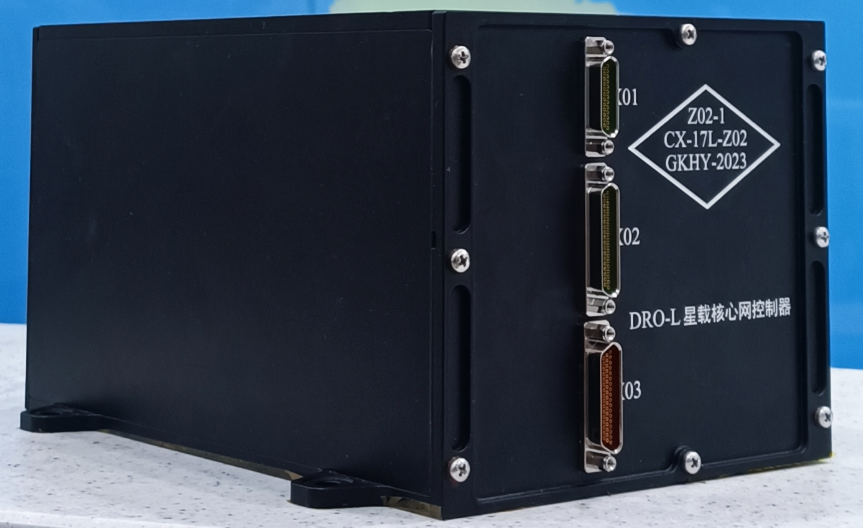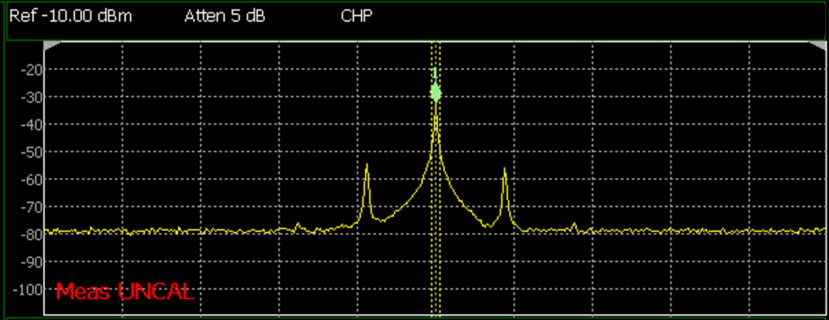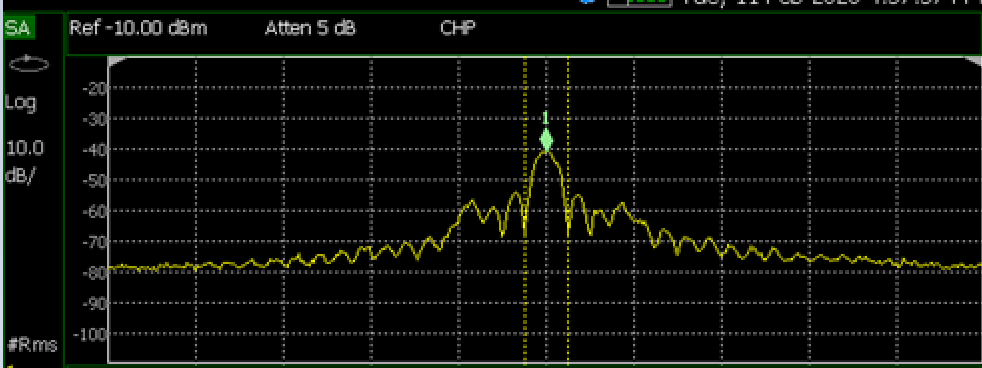 Mobile Tutorial
Mobile Tutorial
 Mobile News
Mobile News
 Huawei Mate 60 mobile phone successfully tested satellite Internet and reached a downlink rate of 5Mbps per second in China Mobile's 'Star System'
Huawei Mate 60 mobile phone successfully tested satellite Internet and reached a downlink rate of 5Mbps per second in China Mobile's 'Star System'
Huawei Mate 60 mobile phone successfully tested satellite Internet and reached a downlink rate of 5Mbps per second in China Mobile's 'Star System'
On January 26, according to official news from China Mobile, China Mobile Research Institute and industry partners recently jointly developed the satellite core network and "satellite system" for the on-board regeneration mode, and completed the whole-satellite ground test and space testing. Environmental suitability testing.
According to reports, the spaceborne core network is used to provide on-orbit data forwarding services in on-board regeneration mode and is one of the important equipment for low-orbit satellite Internet. Facing the low-cost and high-reliability requirements of satellite Internet, China Mobile's satellite core network is based on the 5G core network SBA architecture to adapt to space environments such as space radiation, vacuum, and alternating hot and cold conditions. The design is based on domestic industrial-grade components and domestic Linux operations. The system's highly reliable, flexible, on-orbit reconfigurable software and hardware systems enable independent controllability of the spaceborne core network.
 In the actual measured on-board regeneration mode, the downlink rate of the satellite core network can reach 5Mbps (note: 1000 times is calculated as 625KB/s, 1024 times is calculated as 640KB/s), and the uplink rate can reach 1Mbps , the on-board forwarding rate reaches 230Mbps, the on-board forwarding delay is less than 1ms, the performance is in line with expectations, and will be further optimized and verified in orbit to provide broadband services for mass mobile phones and industry terminals.
In the actual measured on-board regeneration mode, the downlink rate of the satellite core network can reach 5Mbps (note: 1000 times is calculated as 625KB/s, 1024 times is calculated as 640KB/s), and the uplink rate can reach 1Mbps , the on-board forwarding rate reaches 230Mbps, the on-board forwarding delay is less than 1ms, the performance is in line with expectations, and will be further optimized and verified in orbit to provide broadband services for mass mobile phones and industry terminals. 

The above is the detailed content of Huawei Mate 60 mobile phone successfully tested satellite Internet and reached a downlink rate of 5Mbps per second in China Mobile's 'Star System'. For more information, please follow other related articles on the PHP Chinese website!

Hot AI Tools

Undresser.AI Undress
AI-powered app for creating realistic nude photos

AI Clothes Remover
Online AI tool for removing clothes from photos.

Undress AI Tool
Undress images for free

Clothoff.io
AI clothes remover

Video Face Swap
Swap faces in any video effortlessly with our completely free AI face swap tool!

Hot Article

Hot Tools

Notepad++7.3.1
Easy-to-use and free code editor

SublimeText3 Chinese version
Chinese version, very easy to use

Zend Studio 13.0.1
Powerful PHP integrated development environment

Dreamweaver CS6
Visual web development tools

SublimeText3 Mac version
God-level code editing software (SublimeText3)

Hot Topics
 1387
1387
 52
52
 How to cancel China Mobile card
Mar 14, 2024 pm 06:25 PM
How to cancel China Mobile card
Mar 14, 2024 pm 06:25 PM
How to cancel the China Mobile card? In China Mobile, you can directly cancel the phone card. Most users do not know how to cancel the mobile card. Next is the graphic tutorial on how to cancel the China Mobile card brought by the editor for users who are interested. Come and take a look! How to cancel the China Mobile card 1. First open the China Mobile APP, click the [My] area in the lower right corner of the main page and select the [Settings] button in the upper right corner; 2. Then jump to the settings function page, select the [Account and Security] option and click; 3. Then go to the account and security service page and find the [Logout Service] function; 4. Finally, on the page shown in the picture below, check the square box and click [Confirm Application] to log out.
 How to check China Mobile service password
Mar 14, 2024 pm 10:58 PM
How to check China Mobile service password
Mar 14, 2024 pm 10:58 PM
How to check the China Mobile service password? Each user who uses a China Mobile phone card has an exclusive service password, but most users do not know how to check the service password. The following is a diagram of the China Mobile service password query method brought by the editor for users. Text tutorial, interested users come and take a look! How to check the China Mobile service password 1. First open the China Mobile APP, select [Category] on the main page and select [Online Customer Service] in the special area; 2. Then jump to the page shown in the picture below, and click [Click Me] in the conversation; 3 , then enter the service password recharge interface, enter the information and click Next; 4. Then wait for the security check, click [Next] below; 5. Finally enter the service password and click [Submit].
 How to change China Mobile's cheaper plans
Mar 16, 2024 pm 07:43 PM
How to change China Mobile's cheaper plans
Mar 16, 2024 pm 07:43 PM
How does China Mobile change the cheaper package? You can change the cheaper package in the China Mobile APP. Most users don’t know how to change the cheap package. Next, the editor brings users a graphic tutorial on how to change the cheap package of China Mobile. Interested users come and take a look! How to change the cheaper package of China Mobile 1. First open the China Mobile APP, enter the main page and click [Category] at the bottom; 2. Then in the category area, click [Package] on the left and select [Package Change]; 3. Then Jump to the package discount page and select [Apply now] to change.
 Benchmark GPT-4! China Mobile's Jiutian large model passed dual registration
Apr 04, 2024 am 09:31 AM
Benchmark GPT-4! China Mobile's Jiutian large model passed dual registration
Apr 04, 2024 am 09:31 AM
According to news on April 4, the Cyberspace Administration of China recently released a list of registered large models, and China Mobile’s “Jiutian Natural Language Interaction Large Model” was included in it, marking that China Mobile’s Jiutian AI large model can officially provide generative artificial intelligence services to the outside world. . China Mobile stated that this is the first large-scale model developed by a central enterprise to have passed both the national "Generative Artificial Intelligence Service Registration" and the "Domestic Deep Synthetic Service Algorithm Registration" dual registrations. According to reports, Jiutian’s natural language interaction large model has the characteristics of enhanced industry capabilities, security and credibility, and supports full-stack localization. It has formed various parameter versions such as 9 billion, 13.9 billion, 57 billion, and 100 billion, and can be flexibly deployed in Cloud, edge and end are different situations
 How to change China Mobile's package to 8 yuan package Tutorial on how to change China Mobile's package to 8 yuan
Mar 12, 2024 pm 12:43 PM
How to change China Mobile's package to 8 yuan package Tutorial on how to change China Mobile's package to 8 yuan
Mar 12, 2024 pm 12:43 PM
For friends who use the China Mobile APP, everyone knows very clearly that it covers a variety of services. Almost all of these services allow you to choose and operate by yourself, which can solve everyone's problems very well. Some questions are all for everyone to communicate better. There are a lot of package options here. Different packages have very different prices. And your free call time, or your own Some data plans are very different. Some packages are relatively expensive, and the free data talk time is relatively small, so everyone feels that they are at a disadvantage and want to choose to change the package. There is one of the cheapest 8 packages. Everyone really likes the yuan set meal, so the editor of this website will share it with you today
 How does China Mobile set the traffic priority? How to set the traffic priority?
Mar 12, 2024 pm 12:10 PM
How does China Mobile set the traffic priority? How to set the traffic priority?
Mar 12, 2024 pm 12:10 PM
The services provided in the China Mobile app software are very considerate and support all mobile network users to download, install and use. You can log in online by entering your mobile phone number, check the data usage online at any time, and enjoy more stable network services. Open the software and you can operate it. Whether it is the balance of the phone bill or the activation and unsubscription of other value-added services, you can check it online. The speed is very fast. The 5g network is upgraded for free, and the speed during the Internet process is faster and more stable. You can also set the network usage values of different network cards, and you can freely switch the order. You don’t have to worry about insufficient traffic. Many mobile services can be processed online. Now the editor will provide detailed information online for China Mobile users to set traffic priority. Use a sequential approach. 1. Find the settings app on your phone
 China Mobile: The first test flight of drone coffee delivery was successful
Jun 01, 2024 pm 12:30 PM
China Mobile: The first test flight of drone coffee delivery was successful
Jun 01, 2024 pm 12:30 PM
Thanks to netizen Mr. Aviation for the clue submission! According to news on May 29, China Mobile announced that the drone coffee delivery jointly built by China Mobile and Chengdu Tianfu New Area Investment Group successfully completed its first test flight. ▲Chengdu Kechuang Island, a six-rotor drone is "waiting for orders" at the take-off point. It was learned from Chengdu Tiantou that the flight speed of the logistics drone is 15 meters/second, which means it can reach 900 meters in one minute. With a load capacity of less than 4.5 kilograms, one-way logistics delivery can usually be completed in 10 minutes. At present, the drone delivery route of Chengdu Kechuang Ecological Island is planned from Hall 1 to W7, and will later cover the entire island and hot spots around Xinglong Lake. ▲After receiving the order, the barista puts the drinks into the drone's "transportation warehouse". Different from other drones, the logistics drone is operated by the background and does not require specialized personnel.
 It's easy to upgrade tariffs but hard to downgrade them! China Mobile's 8-yuan phone number protection package is accused of setting restrictions at all levels and will not be processed if you don't complain.
Jul 16, 2024 am 07:53 AM
It's easy to upgrade tariffs but hard to downgrade them! China Mobile's 8-yuan phone number protection package is accused of setting restrictions at all levels and will not be processed if you don't complain.
Jul 16, 2024 am 07:53 AM
According to reports on July 9, according to domestic media reports, in addition to difficulty in downgrading tariffs, China Mobile also has problems such as layers of restrictions on the 8 yuan "guaranteed number" package, and no complaints will be processed without complaints. According to the relevant personnel of 10086, the current 8 yuan "number protection" package can be processed normally, but it needs to be called back by a dedicated person within 48 hours after registration. The 8-yuan package is the lowest-priced package in China Mobile's 4G Feixiang series. The monthly rent only costs 8 yuan, and you can choose 30 minutes of domestic calls or data. It is also jokingly called the "guaranteed number" package by users. fenye In 2018, China Mobile removed the 8-yuan package from the shelves, but later re-listed it due to interviews. There is no 8 yuan package in the recommended packages of China Mobile APP.



